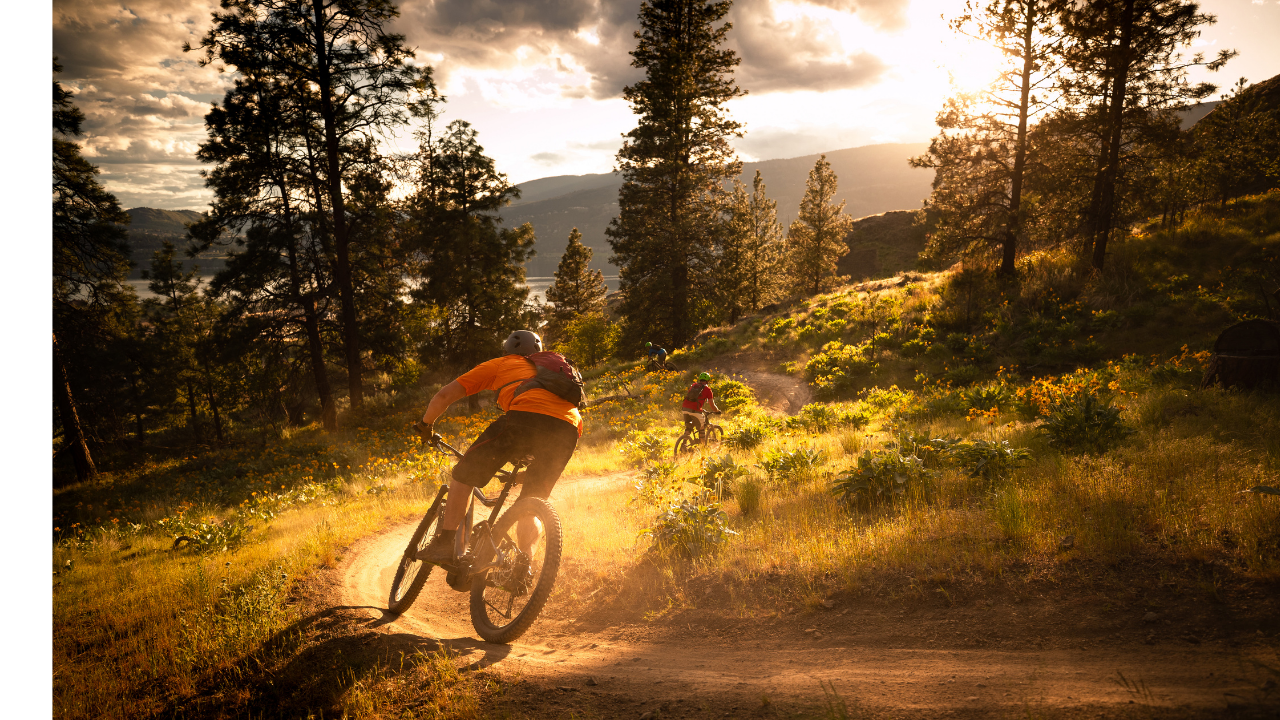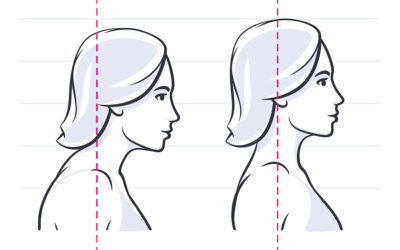
1. Look where you want to go with soft eyes
The number one mistake beginner mountain bikers make is focusing on the obstacles in the trail. The path of your bike follows your eyes. If you stare intently at the rock, tree, or root odds are you will hit them. Instead, look up the trail and pick your line before the technical section. Look through turns and know what is next after your change in direction. How far ahead you look depends on your speed, farther down the trail when you’re going faster and closer in when riding slower. Keep your eyes soft and unfocused and use your peripheral vision so you can see everything around you.
2. Drive your bike
Unlike road biking where you tend to settle into the seat and pedal, you want to drive your mountain bike and not be a passenger. You’ll want to get comfortable moving around on your bike and shifting your weight. A lot of times these subtle movements are the difference between successfully clearing a log or ledge and falling over in the middle. If you slow down and stall out while attempting one of these obstacles throwing your body weight forward can be enough to get you over safely to the other side.
3. Commit to ride or walk
Many nasty crashes happen when you go into a hard section of trail without a plan. You don’t fully commit to riding the obstacle but you also don’t stop and walk. You have to make a choice before you reach the point of no return and fall. On an unfamiliar trail you may choose to get off your bike and look at the trail before making your decision, that’s fine. Once you’ve made your choice stick with it! Half way up the trail balancing on a rock with your pedals far from the ground is not the time you want to wimp out and decide you don’t want to ride the section. The only way out then, is down.
4. Stay relaxed and loose
 Your body is your primary shock absorber. You have much more range of motion in your joints than any bike shock can provide. Keeping your arms and legs loose will allow you to respond better and stay upright when the trail turns rough. When you are fearful a natural reaction is to stiffen your body and tighten your grip on the handlebars. Hitting something with this increased muscle tension is likely to send you off your bike and cause injury. When descending use the attack position where your pedals are parallel, your bottom hovers just above the seat and your chest is lowered so that your back is flat.
Your body is your primary shock absorber. You have much more range of motion in your joints than any bike shock can provide. Keeping your arms and legs loose will allow you to respond better and stay upright when the trail turns rough. When you are fearful a natural reaction is to stiffen your body and tighten your grip on the handlebars. Hitting something with this increased muscle tension is likely to send you off your bike and cause injury. When descending use the attack position where your pedals are parallel, your bottom hovers just above the seat and your chest is lowered so that your back is flat.
5. Maintain momentum
Keeping the bike rolling forward with as little effort as possible is your goal. To do this you need to keep your head up, anticipate shifts, use the breaks lightly and pedal continuously. Getting caught at the bottom of the hill in the wrong gear because you were looking down is No Fun but a common error. To really appreciate momentum and improve your skills, ride a single speed!
6. Shift often
Frequent shifting allows you to maintain your cadence and speed. Of course your cadence will decrease on the hills and in the more technical terrain where you need increased balance and control. You will shift a lot on the mountain bike to conserve energy. Beginners tend to put the bike in one gear and keep it there due to lack of knowledge about shifting. For big terrain changes shift the front gears first and fine tune with your rear gears. Take time to shift through all your gears so that it becomes second nature. Remember, you must be pedaling at low resistance to shift.
7. Let the bike roll
New riders tend to hold the breaks continuously rarely letting go in fear of what lies ahead. When riding behind them I find the trail much more difficult because all the bumps are more dramatic at slower speeds. Just like there is an ideal speed for driving a rutted dirt road there is an optimal speed for your bike wheels. Rocky, undulating terrain has high resistance and will slow you down. It is important to maintain your speed through these sections to smooth out the ride. Keeping all your fingers on the grip without dangling one or two fingers on the break lever will help you control the bike better and absorb the bumps.
8. Do one thing at a time
Your bike doesn’t like to do multiple actions at once – shift, break and turn. When entering a turn for example, make sure you are in the correct gear and have reduced your speed prior to entering the turn so that all your focus is on maneuvering your bike. When possible shift on smooth terrain that is easy to pedal through. Break and control your speed before you reach technical terrain so you roll through drops and rocks without decelerating.
9. Keep traction on the wheels while climbing
It’s no fun to walk up the hill because your back tire skipped and slid out. While climbing you have to drive the back tire into the ground to maintain traction. To do this you’ll first need to keep pressure on the pedals throughout your pedal stroke. Often power is lost at the transition going over the top of the stroke from the rear to the front. Pull back on your pedal as long as you can and drive your knee to your handle bars to maintain even pressure throughout the circle. Second, pull back and down on your handle bars, lower your chest to the bars to keep your front wheel down and arch your lower back. You’ll be amazed at what you can go up using this technique.
10. Know your bike
The mechanics of a mountain bike are not that complicated. Take time to learn how to maintain your bike, fix a flat, repair a broken chain and tension your gears. Knowing the basics will keep you out of trouble on the trail so you can always get home.



